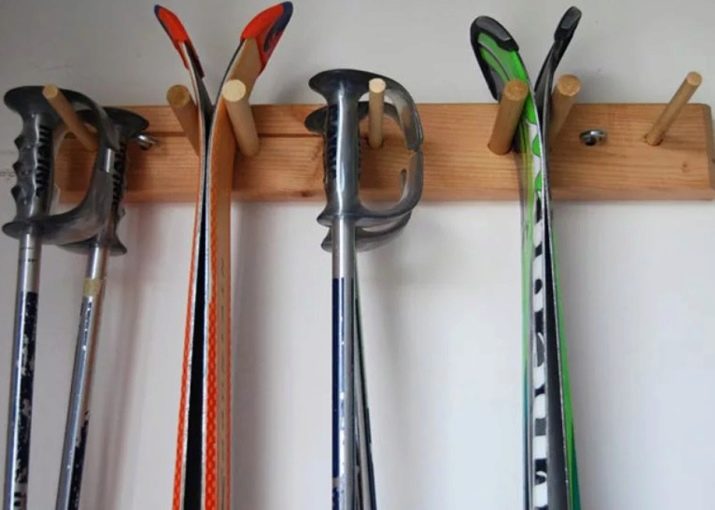All about kids cross-country skiing
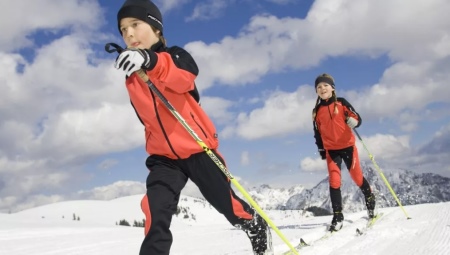
Children's cross-country skis are popular sports equipment that allows you to develop coordination of movements, strength and endurance. But when buying, parents always face many questions: how to choose skis for kids 3-4 years old and junior schoolchildren 7-8 years old, taking into account the height and weight of the child, his individual characteristics. An overview of all the important parameters, popular kits for children and attachments to them will help you make the right decision.



Species overview
Children's cross-country skis, like their adult counterparts, are divided into types according to the level of the athlete's training and the style of skiing he is mastering. It is these parameters that directly affect how the child will ride on the track, how easily he will be able to learn new elements of the course.


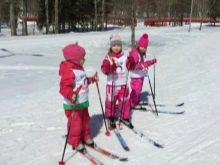
The initial division into groups is focused on the selection of skis for children with different levels of skiing skills. On sale you can find both the simplest basic options used without lubrication, and semi-professional for young athletes. Let's take a closer look.
- Entry level. Such skis are designed for recreational skiing at a minimum speed, versatile in the choice of the course. The plastic coating is notched or remains smooth. There is no need to lubricate such skis in preparation for skiing.
- Semi-professional. Cross-country skis of this class are lighter in comparison with recreational skis - no more than 1.4 kg. They are characterized by increased rigidity. The plastic for the coating is of higher quality, and this, in turn, is usually adapted to use a lubricant that is selected according to the weather.
- Expert. Models for juniors and toddlers seriously involved in skiing. They are divided into types, taking into account the peculiarities of the course when riding, weighing no more than 1.3 kg. Lubrication is always used in such models.
- Sports competitive. The lightest possible options are up to 1100 g. Sports skis have a gradation according to the type of surface, degree of rigidity, and weight distribution.
If only entry-level skis are used in amateur skiing, as professionalism grows, their choice becomes more and more difficult. Many factors are taken into account here: from the complexion of a young athlete to weather and climatic conditions. Great importance is attached to the weight of sports equipment, its purpose and performance.
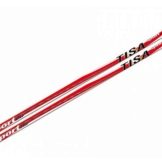
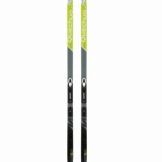

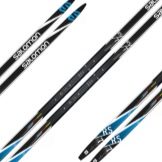
The division by skiing style includes three types of skis.
- Classic. The maximum length of such skis is 207 cm, the optimum softness is medium. Among the characteristic differences in the design of products for movement with a classic move, an elongated and pointed toe can be called. When driving, the block touches the snow cover.
- Skating. They are always shorter than the classic ones, the length limit is 192 cm, the toe is blunt, and there is a gap in the attachment area that prevents the sliding surface from contacting the snow. Skating skis are tough and resist twisting in any direction.
- Combined. Such models are equally well adapted to the execution of any move. The length of each element is average, it can reach 2 m. By their design, they are closer to the "classic".
For teenagers, there are also models of skis designed for extreme tourism. Their main purpose is to move away from the beaten tracks, on virgin snow. Such skis are very hard, it is inconvenient for children to master skiing.
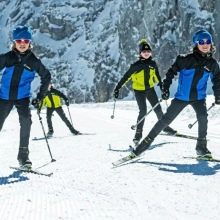

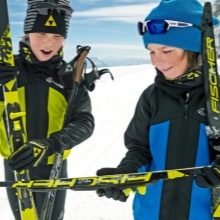
Top brands
Among the companies that produce cross-country skis for children, there are both professional kit manufacturers and amateur ski manufacturers. Austrian brands are among the leaders Fischer and Atomic... Among the inexpensive kits, you should pay attention to the products. STC. "Olympic" produces plastic mini-skis and sets for the little ones.
Among the popular models for children and adolescents, there are five options for cross-country skiing or sets.
- Atomic Redster S5 Junior. Skis for skating without notches on the sliding surface. They demonstrate confident sliding, sold without fasteners, but with holes for their installation (NNN, SNS). Medium stiffness leaves more room for balancing and maneuvering, and the core is made of lightweight polyurethane foam.
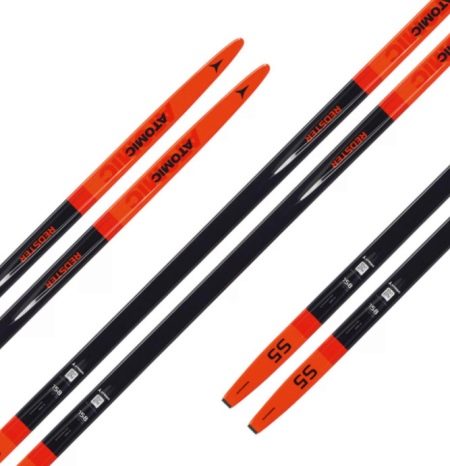
- Fischer CRS Race Jr. A lightweight all-rounder for classics and skating. These mid-firm, non-serrated skis are considered the perfect choice for beginners or schoolchildren. The filling is wooden, Wood Core, the lamination is made of flexible plastic, has a micro-texture that is optimal for different weather conditions.
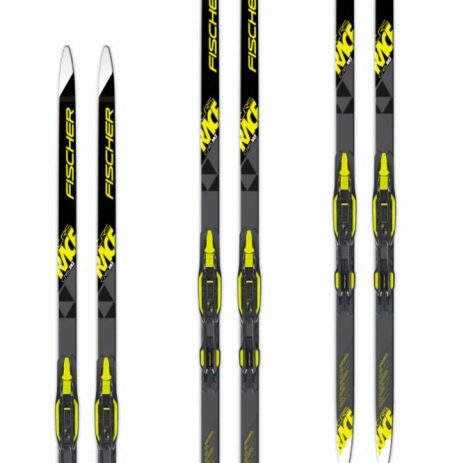
- Nordway XC Bliss. Budget skis of Russian production for skiing with a classic move. There are notches on the sliding part. The kit includes poles and bindings.
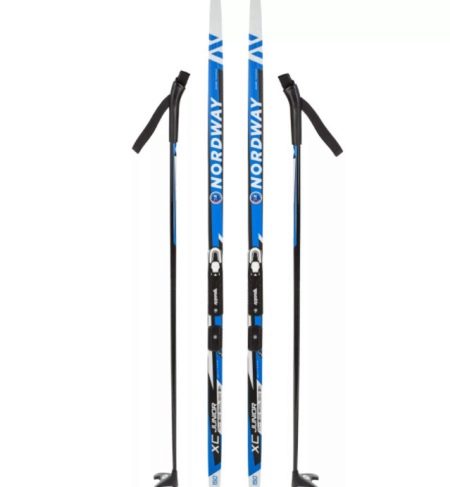
- Tisa Race Cap Universal Jr. A popular cross-country ski model for learning different skiing techniques. The company is a subsidiary of Fischer and maintains high quality standards. Combined skis, with a wooden core and plastic lamination, with low stiffness and excellent glide.
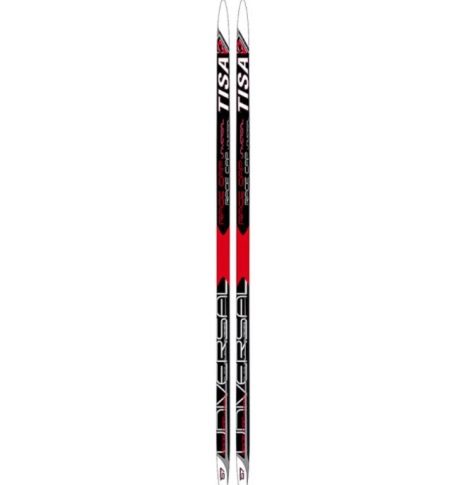
- STC SNN Sted Kid. The set with bindings and poles is the ideal solution for school physical education lessons. The coating of the sliding surface does not require lubrication, combined, it is convenient when changing the course. The design has a glass fiber reinforcing block.
These are some of the best offers on the Russian ski market for a children's audience. Lightweight and compact models can be found among both budget solutions and large brands.

Additional elements
For a young skier, in addition to the basic equipment, you will also need to purchase many additional accessories. For example, waterproof gloves that fit comfortably around the surface of the stick. Also among the required accessories are the following components.
- Mountings. If skis are sold immediately with them, you should choose the option with the NNN or SNS marking. The first modification of the mount has flexors and longitudinal guides. The second is used by professional athletes. It includes models with automatic fastening, it is possible to divide into classes according to the type of movement.
- Boots. They must correspond to the fixings, have a waterproof outer shell and a thermal insulating layer on the inside. Children's shoes must be chosen with a minimum weight, but resistant, not prone to deformation. Ridge models are always high and tough, for the "classics" they produce cropped models with soft soles.
- Sticks. They are selected based on the height of the child. When riding in a classic move, the sticks rest against the armpits. When skating, you will need options with a length just above the shoulder. High-quality poles are light, stiff and durable, 25–30 cm shorter than a child's height.
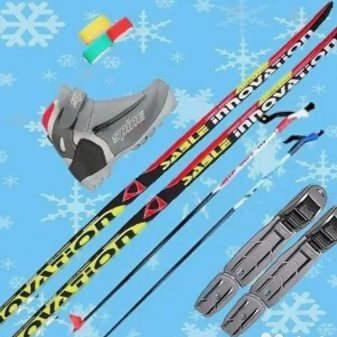
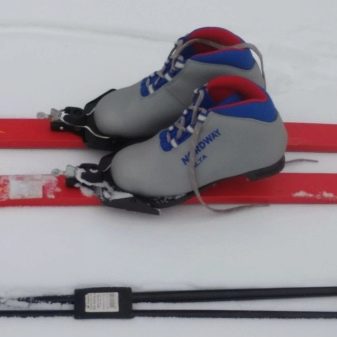
Other accessories are selected individually. These can be covers and bands for fastening skis during storage, lubricants for preparing for skiing.
How to choose skis for a child?
The children's category includes skis with a length of 110, 120, 130, 140, 150, 160 cm. It is possible to choose the right ones for a child 3 years old or 4, 5, 6, only taking into account all the factors. It's not just the size of the inventory that matters. Before finding the perfect set for a toddler or schoolchild of 7, 8, 9 years old, you will have to accurately calculate the load by weight, take into account the height of the child. Otherwise, the selection will be inaccurate.
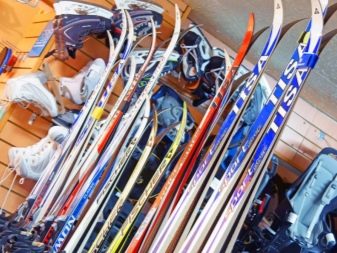
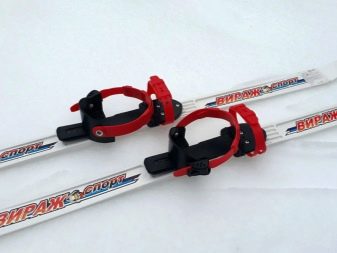
By weight
It is believed that children's ski models are produced exclusively for a user's weight up to 40 kg. It is possible to understand that the chosen sports equipment is suitable for a child in a practical way. To do this, the young skier must place the set of equipment vertically, aligning the sliding surfaces. After that, the child clamps the area behind the heel of the attachment with 2 hands. If the kit fits, the gap will gradually and smoothly close.
Signs that the skis are not suitable for a particular child, with such a check, will be as follows:
- formation of a gap of more than 2 mm under the block;
- knocking on rapid squeezing;
- socks diverge rather than join;
- when compressing, the efforts are insufficient.
The appearance of any of these signs is a reason to look for a new pair of skis.
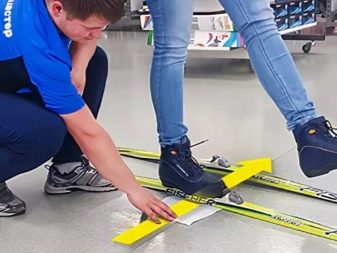
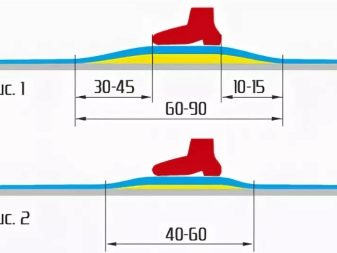
By height
Young athletes aged 2 to 5 years old skis are selected exclusively in accordance with their height. The stock of length can be 1–2 cm. From the age of 5 this difference gradually increases. Younger schoolchildren with a height of 130 cm are already skiing 1.5 m long. In adolescents, the differences between these parameters reach 250 mm.
Considering all these factors when choosing skis for a child, it is possible to achieve a perfect match of all parameters of sports equipment to his height and body weight. In addition, if you have to move in a classic move, you will have to take into account the peculiarities of the pads. It is of three types.
- Short 35-50 cm. It is designed for movement on a hard track, the area of contact with the snow is minimal.
- For fine-grained snow. Pads of this type are 45-60 cm long. Skis are not rigid, socks have increased elasticity.
- Universal, for transitional weather. The length of the last is average here, as well as the stiffness.

By the type of sliding surface, children's skis are also classified separately. Most of the hobbyist models have a notched plastic finish. Such skis do not require lubrication, but they will not be able to show high-speed skiing. In this case, it will be very difficult to slide on icy snow.
Professional cross-country skis are made with a coating of high molecular weight polyethylene, have longitudinal grooves on the working surface, require the obligatory application of lubrication for the weather, paraffin treatment.
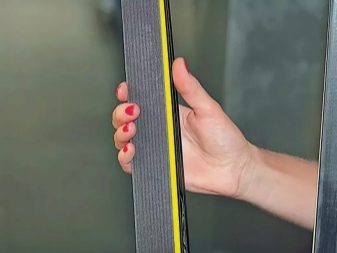
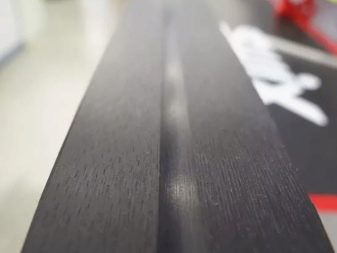
Care Tips
Recreational cross-country skis do not need complicated or lengthy preparation before use. It is enough to protect them from impacts and falls, to clean them from dirt and dust.Professional and sporty models with longitudinal grooves require a more careful approach. Their surface is treated with grease or paraffin according to the weather using a special heating iron. To work, you need a suitable flat surface on which you can lay the skis with the sliding part up.
You need to act in a certain way when applying lubricant.
- Rub the ends of the ski work surface.
- Preheat the iron to 100-150 degrees. Finish the ends of the skis for alignment.
- Cool for 15 minutes. Remove excess ointment with a plastic scraper, moving from the toe in the opposite direction.
- Brush surface with nylon hairs.
- Clean the heel with 0-grit sandpaper.
- Prime the middle of the ski. Distribute with iron. Then grind.
- Apply a retaining layer of grease in the area of the shoe. Grind, after hardening, remove excess substance.
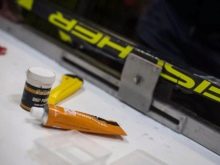
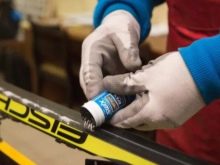
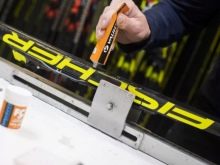
It is important to note: the toe and heel are rubbed with lubricants only for the classic move. For skating, you will need to spread the paraffin over the entire surface. The holding layer in the area under the last is relevant only for the "classics".
If the child does not play sports professionally, you can choose skis of the usual amateur class for him. In this case, lubrication can be dispensed with. Parents need only minimal effort to keep and keep the skis clean. In the summer, they are removed from the open sun and from heat sources to avoid deformation.
